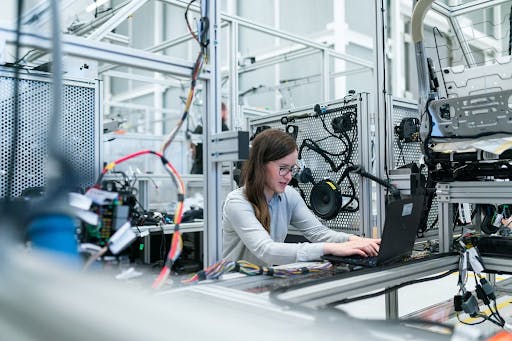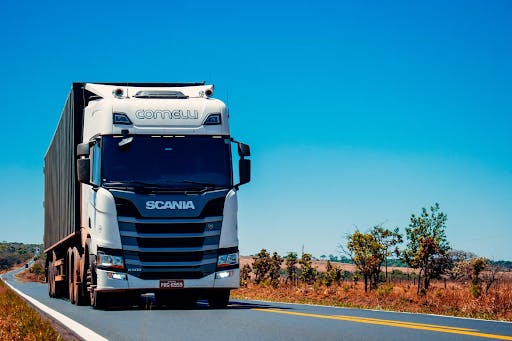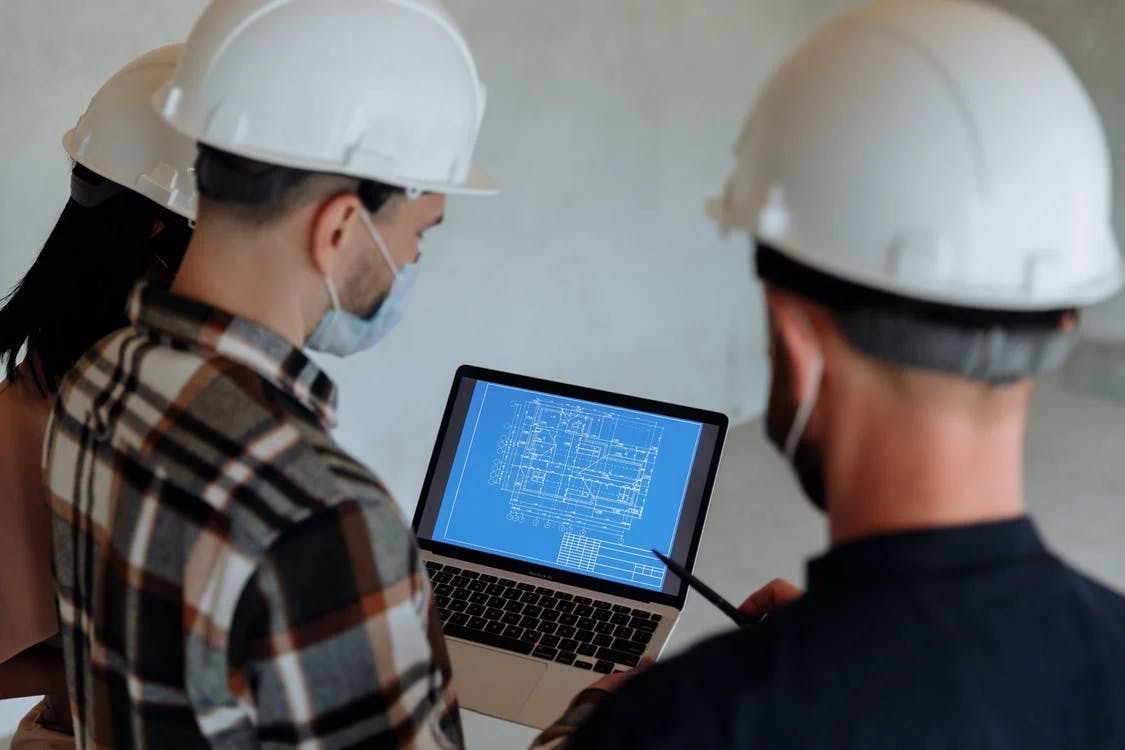
The internet of things (IoT) refers to a network of physical objects known as "things" equipped with sensors, software, and other technologies to connect and exchange data with other devices and systems over the internet. What could those "things" be, though? A thing in the IoT might be a smartwatch that monitors a user's vital signs or a device that identifies aberrant functioning parameters of industrial equipment, among other things we've seen in recent years in day-to-day operations. Like any other object with an IP address, this object may send and receive data over a network. Many of these gadgets are simple household items and complex industrial instruments.
Companies in various industries are gradually beginning to use IoT to run more efficiently while also enhancing their understanding of their customer's demands to provide better customer service, improve decision-making, and increase the value of their business.
A brief history of IoT
Kevin Ashton is known as the "Father of IoT" because, in a presentation to Procter & Gamble (P&G) in 1999, he was the first to mention the internet of things. In his presentation, he sought to bring radio frequency identification (RFID) to the attention of P&G's senior management. Kevin named his presentation "Internet of Things" to reflect the emerging internet trend of 1999.
Although he was the first to describe it, the concept of connected gadgets has been present since the 1970s.

Photo credits: Kevin Ashton
Another curiosity is that the first internet appliance was a Coke machine at Carnegie Mellon University in the early 1980s.
This IoT initiative arose from machine-to-machine (M2M) communication, in which devices are connected via a network without human intervention. But what exactly is M2M? It refers to connecting a device to the cloud, administering it, and finally collecting data from it.
Furthermore, the IoT ecosystem did not come into its own until the middle of 2010, when China's government announced, among other things, that IoT would be a strategic priority on its agenda.
How does IoT work?
A web-enabled network of intelligent devices that use established systems such as CPUs, sensors, and communication hardware makes up an IoT ecosystem. These systems gather, transmit, and act on data from their surroundings. Furthermore, IoT devices communicate to an IoT gateway or edge device to share the sensor data they acquire. This information is either transferred to the cloud for analysis or evaluated locally, which means that the devices connect and act on the information they get. Furthermore, the majority of them operate without the need for human involvement. Of course, a person must engage with the devices to set them up, give them instructions, or view the data collected by the sensors.

Photo credits: Pexels
Why is IoT important?
In recent years, the Internet of Things has assisted individuals in living and working more intelligently. IoT is unquestionably important to enterprises and industries, in addition to the vast supply of intelligent gadgets for automated homes. It gives businesses a real-time view of their systems work, with information on everything from asset performance to supply chain and logistical operations.
IoT allows businesses to automate processes, save labor expenses, eliminate waste, and improve service delivery, lowering the cost of manufacturing and delivering cargo while maintaining complete transparency over consumer transactions.
What are the benefits of IoT to organizations?
Some of the expected benefits of IoT enable businesses to:
- monitor their overall business processes;
- improve the customer experience (CX);
- save time and money;
- enhance employee productivity;
- integrate and adapt business models;
- make better business decisions;
- and generate more revenue.
Monitoring operations around infrastructure is another area where IoT may help. Sensors, for example, could be used to track events or changes in structures and other types of infrastructure. This has several advantages, including cost savings, time savings, quality-of-life workflow modifications, and a paperless workflow.
Every industry is affected by the Internet of Things, including healthcare, logistics, utilities, retail, and manufacturing, to name a few.

Photo credits: Unsplash
Consumer and enterprise IoT applications
The internet of things has a wide range of real-world applications, from consumer and commercial IoT to manufacturing and industrial IoT. (IIoT). IoT applications can be found in various industries, including automotive, telecommunications, and energy.
For example, in the industrial sector, notably in healthcare, IoT offers many advantages, including the ability to monitor patients more closely through data analysis. IoT technologies are frequently used in hospitals to fulfill pharmaceutical and medical instrument inventory management activities. In the case of intelligent buildings, sensors that identify the number of people in a room can be used to cut energy expenditures. The temperature can be adjusted automatically, such as putting on the air conditioner if sensors detect that a conference room is full or turning down the heat if everyone has left the workplace.
What is industrial IoT?
In the industrial sector, notably in healthcare, IoT offers many advantages, including monitoring patients more closely through data analysis. IoT technologies are frequently used in hospitals to fulfill pharmaceutical and medical instrument inventory management activities. In the case of intelligent buildings, sensors that identify the number of people in a room can be used to cut energy expenditures. The temperature can be adjusted automatically, such as putting on the air conditioner if sensors detect that a conference room is full or turning down the heat if everyone has left the workplace.
- Manufacturing
- Smart Buildings
- Logistics
- Cold-chain
- Utilities
- Healthcare
- Among others
Some examples of industries that can benefit from IoT:
Manufacturing
Manufacturers can gain a competitive advantage by employing production-line monitoring to enable proactive equipment maintenance when sensors detect impending breakdown. Another example is the use of sensors deployed on the shop floor to monitor various processes in real-time.

Photo credits: Unsplash
Furthermore, manufacturers can respond swiftly to events while enhancing their decision-making using sensor alerts. Companies can lower operational costs, increase uptime, and improve asset management performance as a result of this.
Transportation and Logistics
In the food and beverage, floral, and pharmaceutical industries, which frequently transport temperature-sensitive items, IoT monitoring systems that provide alerts when temperatures climb or decrease to a level that threatens the product can be pretty beneficial.

Photo credits: Unsplash
Because fleets of vehicles, trucks, ships, and trains carry commodities that can be redirected based on weather conditions, vehicle availability, or driver availability, this business can profit from numerous IoT applications. Sensors for track-and-trace and temperature control monitoring could be installed in the inventory.
Healthcare
There are numerous advantages to working in the healthcare industry. Doctors, nurses, and orderlies frequently require precise location information for crucial assets such as IV pumps.

Photo credits: Unsplash
Many hospitals benefit from asset tracking to ensure proper usage and expense allocation to each department. Assume an IoT sensor is installed in a hospital's IV pump. In that situation, it's easy to track via an IoT asset-monitoring app, allowing any professional looking for one to locate the nearest IV pump immediately.
Employee Safety Across All Industries
The Internet of Things can help improve worker safety and track physical assets. Employees working in hazardous locations, such as mines, oil and gas fields, and chemical and power facilities, can be tracked. Automatic alarms are issued to the control center in the event of an accident, allowing individuals to be rescued as quickly as possible from dangerous surroundings.

Photo credits: Pexels
Workers' vital signs, such as body temperature, can also be monitored in real-time to detect heat exposure. This is especially crucial for agricultural and construction employees who work outside.
In conclusion
The Internet of Things can help improve worker safety and track physical assets. Employees working in hazardous locations, such as mines, oil and gas fields, and chemical and power facilities, can be tracked. Automatic alarms are issued to the control center in the event of an accident, allowing individuals to be rescued as quickly as possible from dangerous surroundings.
Workers' vital signs, such as body temperature, can also be monitored in real-time to detect heat exposure. This is especially crucial for agricultural and construction employees who work outside.